The Akiyoshidai plateau and Akiyoshido cave are located in the mid-western part of Yamaguchi Prefecture, Japan. The Quasi-National Park and Special Natural Monument attract many day-trippers from the region. It is the perfect destination for a day of nature between Hiroshima and Fukuoka!
Akiyoshidai Plateau
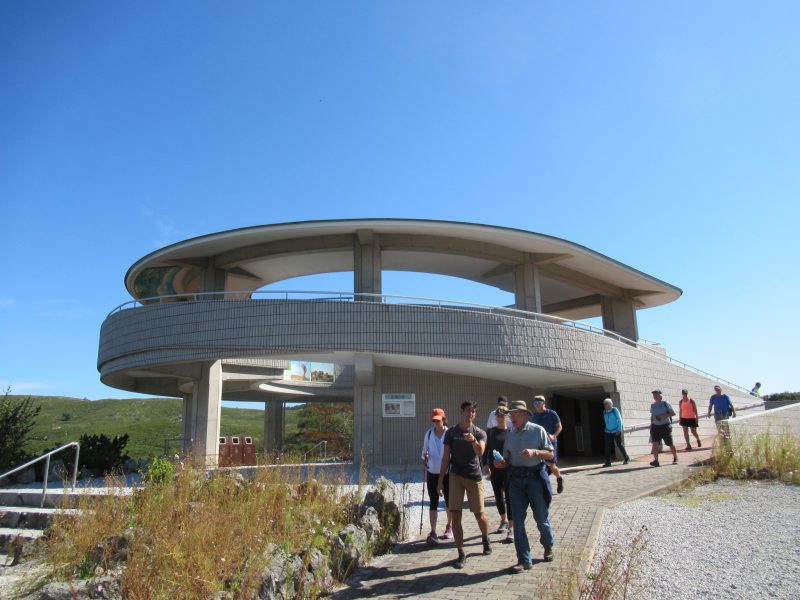
Akiyoshidai is a karst plateau. Karst is a topography that is formed from the dissolution of soluble rocks such as limestone, dolomite, and gypsum. It is characterized by underground drainage systems with sinkholes and caves. Akiyoshidai stretches 16 km toward the northeast and 6 km toward the northwest. The total area is 93 km2.
The maximum thickness of the limestone is over 1,000 meters in the eastern part. Koto River separates the plateau into two parts, and the eastern part is the main Akiyoshidai. The limestone is made from coral which was formed on top of underwater volcanos about 350,000,000 years ago.
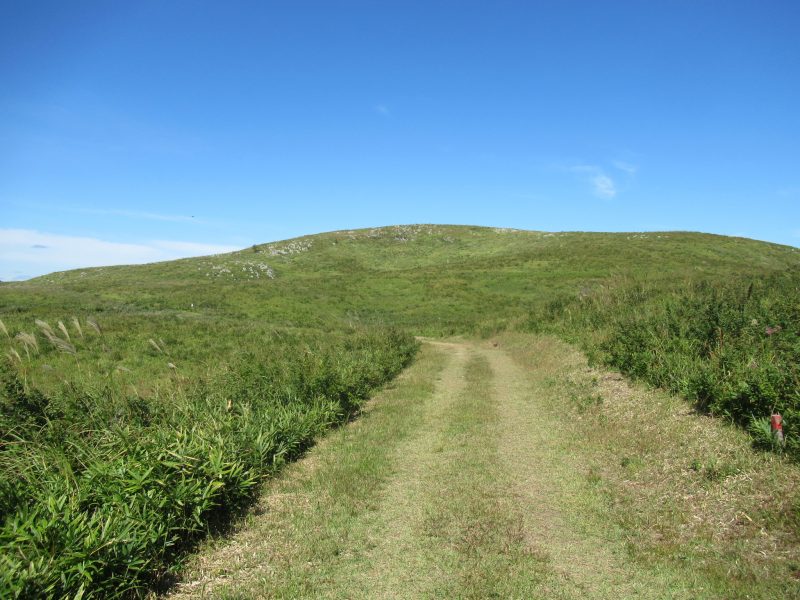
It is very comfortable to walk on the plateau dotted with limestones. The ground is coved with grasses, not trees. So you can see far into the distance. But still, it is best to have access to Google maps because everywhere it looks similar. The reason why there are no trees is that they set the hill on fire every February. They do this because a long time ago they started to grow vegetables in the doline, which is a ball-shaped depression created by dissolved limestone. Additionally, grasses were used to feed domestic animals. But now, they keep burning the hill to maintain the beautiful scenery for the tourists.
Akiyoshido Cave
100 to 200 meters under the Akiyoshidai Plateau lies the Akiyoshido Cave. It is one of the biggest caves in Japan. The total length is 10,700 meters and about 1,000 meters are open to the public. There is an underground river along the trail, and there are many scenic spots along the route. You will get a map at the reception. Let us share some wonderful photo spots in the cave.
Entrance: The entrance of the cave is amazing. It is a gap in the limestone with a height of 20 meters. Water is running from the gap. You will cross a bridge to get into the cave. This vista will give you some adventurous spirit.
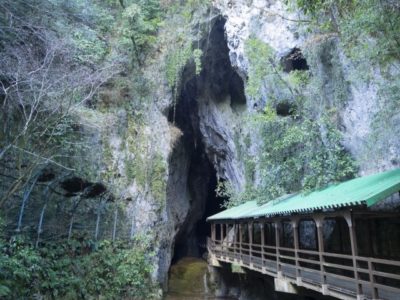
Hyakumaizara: Hyakumaizara means one hundred plates. Small water pools are continuing like steps and it looks like a terraced rice field. It was made by water that’s been flowing here for millions of years.
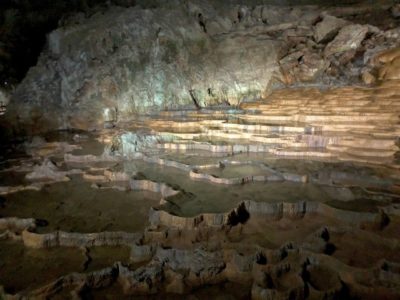
Donai Fuji: There is a big limestone called Donai Fuji as it looks like Mt. Fuji. Donai literally means ‘In the cave’. Water drops have piled up and created this big object that’s about 5 meters tall. It must have taken an unimaginable amount of time!
Chimachida: This is another series of water pools like Hyakumaizara. Chimachida means ‘one thousand plots of rice fields’. Actually there are not one thousand, but it means ‘a lot’. It looks like the scenery in Japan’s rural area.
More Photography Spots in the Cave
Senjojiki: This is one of the biggest spaces inside a cave in Japan. The ‘hall’ is 80 meters wide, 175 meters long, and 35 meters high.
Kasazukushi: Kasazukushi means ‘a lot of umbrellas’. There are many stalactites hanging down from the ceiling which look like umbrellas. You will find them at the beginning of Senjojiki.
Koganebashira: Koganebashira means ‘golden pillar’. Around the central thick pillar, there are thousands of thin pillars that form intricate patterns. This 15-meter high object has a tremendous impact.
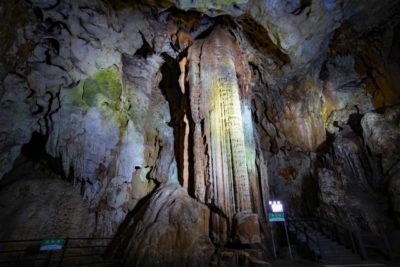
Kuragenotakinobori: Kuragenotakinobori means ‘jellyfishes are climbing the waterfall’. Stalactites formed by water drops really look like jellyfishes flying in the air. You can truly feel the great power of nature here!
The temperature inside the cave is stable year-round at about 17 degrees Celsius. The humidity hovers around 95%. In the middle of the trail, there is an elevator to go up to the Akiyoshida Plateau, so you don’t have to come back to the entrance to visit the limestone plateau. If you walk up 5 minutes from the upper elevator station, there is an observation building from which you can see the magnificent view of the plateau.
Kawarasoba
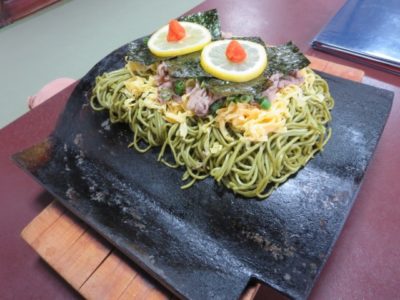
Kawarasoba is an unique soba or buckwheat noodle and a specialty of Yamaguchi. Kawara means ‘rooftile’. After they put the noodles on the rooftile, they light a fire under the tile and grill them. It is a very interesting way to eat soba!
Your Japan Tour
As seasoned Japan experts, we create perfect Japan package tours including destinations like Akiyoshidai and Akiyoshido. Check out our group tours and private tours, or contact us to start planning your unforgettable holiday to this fascinating country. Japan is full of once-in-a-lifetime experiences, culture, history, nature, and delicious food!
Akiyoshidai & Akiyoshido Information
Access: From Shi-Yamaguchi Station (Shinkansen): Take Chugoku JR Bus to Akiyoshido. It takes about 40 minutes.
Entrance fee (Akiyoshido Cave): 1,300 yen for adults / 1,050 yen for junior high school students / 700 yen for elementary school students
Hours: From March to November: 8.30 am to 6.30 pm (last entry 5.30 pm) / From December to February: 8.30 am to 5.30 pm (last entry 4.30 pm)